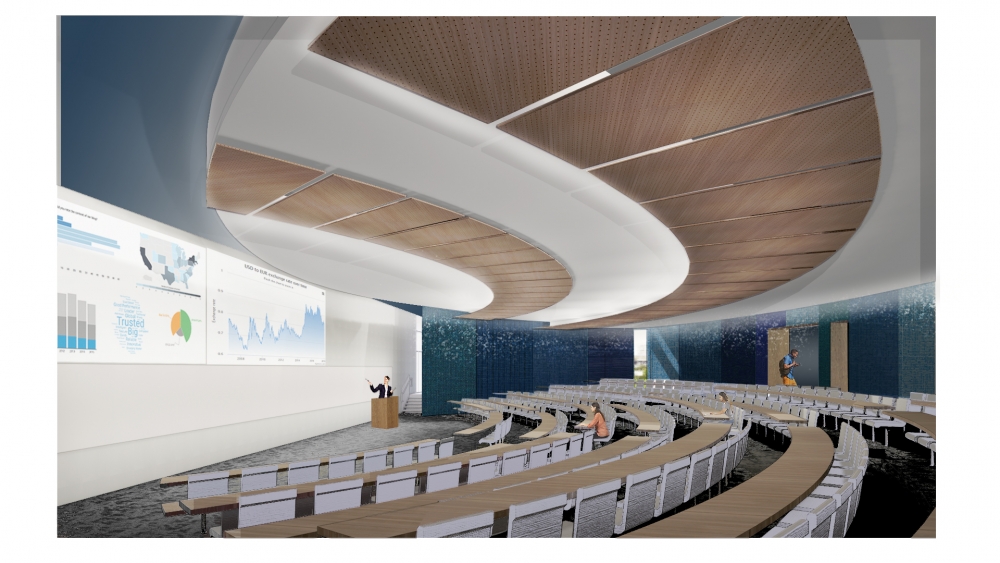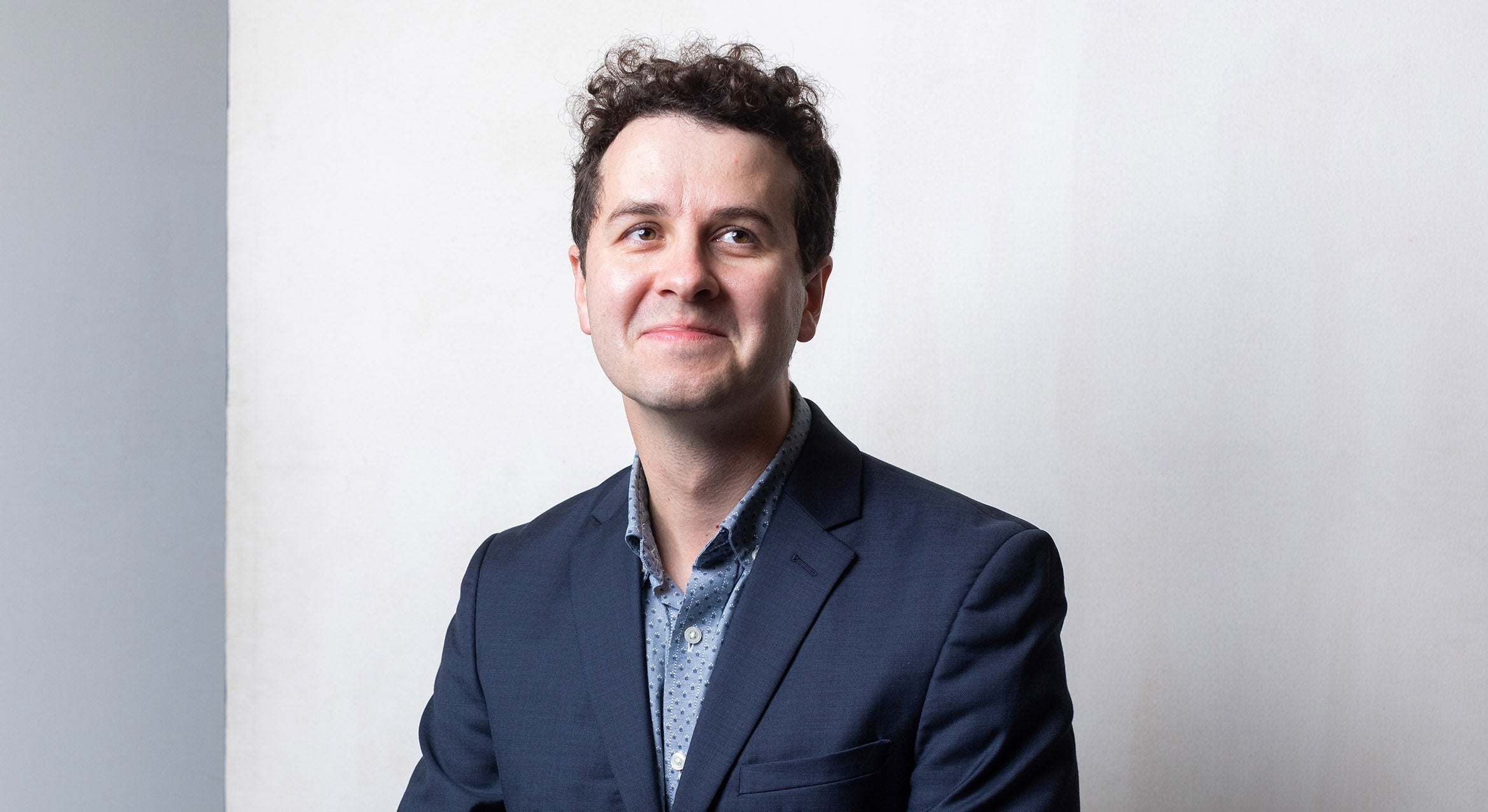In a Class of its Own
In a move it hasn’t made in more than 50 years, UC Santa Barbara has broken ground on the first building dedicated to classroom space since 1967. The project, featuring state-of-the-art spaces and learning technology, was approved by the UC Regents in 2019
Completion of the four-story building is anticipated for spring 2023.
“During a pandemic that has required much attention and focus on the immediate, we are excited to share a piece of good news regarding our campus’s future,” said Chancellor Henry T. Yang. “While in many ways the pandemic has dominated the past year, this project reminds us that our commitment to advancing teaching and research cannot be overshadowed.”
The idea for the building, according to Yang, was borne out of a series of meetings between he and faculty members four years ago. “These conversations,” he said, “along with input from our students, parents, faculty and staff, made it clear that our greatest need was state-of-the-art classroom space. Many thanks to our New Classroom Building Committee members and Chair Gene Lucas for their guidance and oversight of the project, and to our Capital Development and Design, Facilities and Safety Services colleagues for their dedication and efforts to make this interactive learning space a reality for our campus.”
And so it will be.
The building offers modernized lecture halls and classrooms with the latest interactive learning and instructional technologies at the heart of the campus. It will increase our campus’s classroom seating capacity by 2,000 seats, or 35%. A plan has also been formulated for bicycle traffic and more than 1,800 bicycle parking spaces.
“This building will have a transformational impact,” said David Marshall, executive vice chancellor. “We are all eager to return from the exile of remote teaching to the community of the classroom, yet we have a new awareness of the potential of instructional technologies. We can look forward to having a 21st century facility in which to reinvigorate our commitment to teaching and learning.”
Lucas, the building committee chair and former executive vice chancellor, called the new facility “long overdue.”
“The Registrar has been struggling to schedule classes into our existing inventory for over a decade,” Lucas said. “It also provides an opportunity to develop classrooms that enable the newest teaching methods to be applied, from turn-to-teach abilities in large classrooms (enabling an almost instant transition from lecture to group study) to project-based-learning in a flipped classroom approach. These are teaching styles that greatly appeal to our incoming students, as they have been learning in a team-based approach since kindergarten.”
Indeed, the new building will be a game-changer for today’s college students, noted Jeffrey Stopple, associate vice chancellor of undergraduate education, who lauded the “amazing job” done by the campus design and building team.
“We’ve retrofitted a lot of classrooms as best we can with modern technology, but it will be completely different to have classrooms designed for the use of technology and how that fits into today’s innovative pedagogy,” Stopple said. “Lecture halls are designed for ‘active learning,’ with seats that can turn so students can interact with each other in class. Project-based learning classrooms have multiple tables (seating 6-8) with whiteboard space and a shared computer monitor. Outdoor spaces encourage informal interactions.
“One statistic that is kind of mind-blowing: given how much of our classroom inventory is in this one building (over 25%), a typical student will spend more than a year of their 4 years in classes in this one building,” Stopple added. “With over 5,000 students entering each year and a projected 50-year lifespan of the building, that amounts to 250,000 student years in that building.”
The state-funded project is being supported by appropriations from the 2019-20 State Budget Act earmarked specifically for construction of the classroom building. The 2019-20 state budget was enacted in June 2019.
“When it is completed, the new classroom building will accomplish an important campus goal to modernize our teaching facilities, and will enhance the educational experience for a large number of our students,” said Susannah Scott, distinguished professor of chemical engineering and of chemistry and biochemistry, and chair of the Academic Senate. “Faculty are looking forward to the opportunity to deliver high quality instruction in a state-of-the-art building, and to engage with our students in the personalized ways that make a UC Santa Barbara education unique. The new facility will also allow instructors to integrate new teaching technologies where appropriate and to incorporate active learning in a wide range of formats, from small interactive seminars to large lecture classes.”
The versatility of the spaces therein is indeed the project’s biggest benefit, concurred George Michaels, executive director of Instructional Development.
“The new classroom building’s most compelling design feature is providing faculty flexibility to teach in whatever mode(s) work the best for them, their subject matter and their students,” Michaels said. “It is the combination of the classrooms’ geometry, the provision of flexible furniture, combined with cutting edge display and sharing technologies that support that flexibility. All of the rooms, including the large lecture halls, are intended to make it much easier for faculty to pursue the whole gamut of highly engaging active, and collaborative learning strategies.”
Project Manager Liana Khammash oversaw the project for UCSB, leading the Classroom Building team from campus Design, Facilities and Safety Services.
“Over the last two years, our team of professionals in Design & Construction Services represented the university in all aspects of capital development, including early budget management, programming, design, bidding and public agency approvals,” Khammash said. “We are very excited to start construction on schedule and despite COVID-19 impacts. Our collective efforts in collaboration with campus leadership have been focused on creating an efficient, safe and sustainable facility that serves the needs of the campus functionally and programmatically. We also collaborated with Facilities Management to ensure that the basis of architectural and engineering designs will result in a building that can be operated and maintained in a cost-effective manner.”
As a destination for up to 2,000 students per hour, Khammash noted, circulation to, around and inside the building is “critical to the success of the design.”
“This was probably one of the most challenging and most discussed aspects of the design during the planning phases,” she said. “The design concept by LMN Architects succeeded in creating an inviting and vibrant new corridor leading to the building and connecting major access points to the site. The Classroom Building is configured as two conjoined masses with an east-west orientation. With open-air central circulation, all the circulation edges are woven into the fabric of the campus, encouraging interactions among students and faculty, and creating spaces for informal connections in the building and around it.”
The architect on the project noted its cohesion with and complement to the campus environment.
“LMN Architects have greatly enjoyed collaborating with University leadership to envision a building and public spaces that are open and welcoming, drawing on the coastal climate and spectacular natural setting to create a place that will be among the most heavily used on campus,” said Stephen Van Dyck, principal architect and partner in the firm. “The building’s site and design represent a major step forward towards the goals of the University’s Long Range Development Plan, anticipating the eventual extension of Library Mall to the south and realizing the eastward extension of Pardall Mall, ultimately linking several of the campus’ most significant shared buildings along these major public spaces.”





